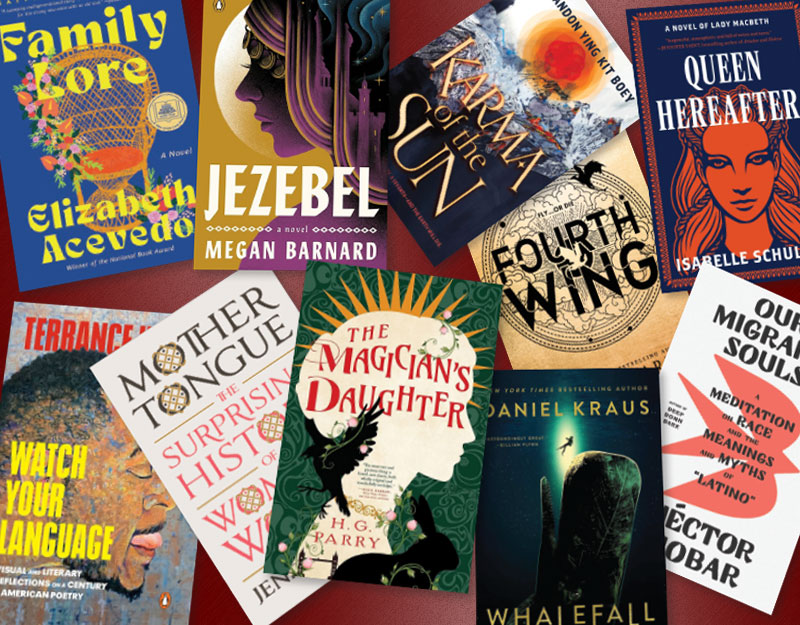SCROLL DOWN TO READ THE POST
‘Doctor Who’: The Ultimate Revenge of the Nerds

For long-time fans of Doctor Who, its explosion in popularity the last couple of years must be both gratifying and perplexing—it’s great that the rest of us finally caught on, but what on earth took us so long?
I’d contend, notwithstanding the many smart, creative moves that Steven Moffat has made as show runner (and the memorable episodes and characters that have resulted), that of all the venerable pop culture franchises out there, Doctor Who has benefited the most from the current wave of Geek Chic… even as the series itself continues to help drive this cultural trend. (Incidentally, if you’ve ever wanted to illustrate what’s meant by the term “franchise” in this context, Doctor Who and its paradigm of “regenerating” its lead may just be an exemplar—it’s far more elegant in presenting new-yet-same iterations than, say, the James Bond movies.)
ADVERTISEMENT
ADVERTISEMENT
Sure, before Geek Chic, there’d be brainy characters on TV… but there was no The Big Bang Theory.
And before the Doctor’s ascent to the pop culture stratosphere, there were certainly plenty of nerdtastic idols in genre material—after all, it’s kinda hard not to have any science in a work that’s labeled “science-fiction.”
But with the Doctors, particularly in their tenth and eleventh incarnations, we see something different at work: STEM skills becoming neat, if not awesome, even to non-nerds and, just possibly, (gulp) “sexy.” Forget about being a mere sidekick or a “science officer” or an android that hungers for human emotions because, come on, we all know how hopelessly incompatible those are with intellect…
Instead, we have a near-perfect combo of Thinker, Do-er, and, um, Feeler. That’s because it’s the engaged, warm humanism of the always-thinking, fast-talking Doctor (interestingly, not a human himself) that distinguishes the series. Just take a gander at the central image for Series 7 so far, in which he looks very much the “Romantic hero” as he saves an equally Romantic “Doomed Beauty.” It demonstrates that an idea that would have seemed laughable ten or twenty years ago is a powerful one today. And the echoing of Romanticism is significant when one remembers that there is nothing romantic, lowercase “r,” going on between the Doctor and Amy Pond. The messaging to geeks is clear: you may not have muscles, may not even be in a relationship, but you get the job done anyway… and look pretty darn inspiring as you do.
For educators, the key distinction is that the Doctor isn’t exploring all of time and space as part of a scheme to colonize it, or to extend a diplomatic or humanitarian mission freighted with preachy moralizing or politics. Nor, for that matter, is he out to field test his own theories, collect specimens, or otherwise further his own work/ego in the realms of science and technology. You see where this is going, don’t you?
He does what he does because, yep, it’s fun.
So if there’s a better role model for students in terms of getting non-geeks interested in the sciences and those who are already geeks to stop apologizing for this interest, then I don’t who (pun intended) that is. In short, yes, bow ties really are cool.

ADVERTISEMENT
ADVERTISEMENT
Of course the Doctor is not the only pop character who relies on scientific background knowledge, mathematical calculation, and deductive reasoning applied to both events and psychology; in this sense he clearly shares something with the title character of Moffat’s other series, Sherlock. However, Doctor Who has the only newly released DVD and Blu-ray with a nearly 45-minute featurette devoted specifically to science. Indeed, the previously aired and helpfully titled “The Science of Doctor Who” serves not just as an effective thought-provoker but also an intro to the entire world of Who for those new to it. Breaking its runtime into discrete, classroom- or library-friendly segments focusing on individual topics such as cyborgs, time-travel into the past, and time-travel into the future (turns out the latter is much, much easier), this highly engaging disc extra may be worth the price of the disc itself. It not only held my own kids spellbound when I screened it (and taught me more than a thing or two), but does not skimp on rigor: actual, real-life scientists rate the feasibility of each topic while other actual, real-life scientists explain work of theirs that’s related to elements from the show (e.g., per the Doctor’s “screwdriver” we witness small objects levitated by sonic waves).
You may have already considered this, but media specialists working with science curriculum could very easily go beyond the topics dictated by the featurette or the series itself—just use the video (which is also available on the Web) as a springboard for ideas and as a model for presentation. Any young geek can then create a “Science of…” media product that leverages fannish knowledge of Star Trek, Star Wars, or any number of mega-properties as its basis. And you don’t need to limit things to scifi, either: consider the M:I series with its face-replicating technology or a superhero such as Iron Man who, let’s face it, is basically a smart guy (so cool that you almost don’t notice he’s a nerd) covered in gadgets that he made himself. Within this framework, students can create podcasts, YouTube videos, in-class (or in-library) presentations (with or without digital slideshows), or even old-fashioned “science fair”-style dioramas (which are still widely used). Better yet, pair members of the same fandom to work collaboratively on such a project. Are there some kids who do not self-identify as members of any fandom? Well, then maybe ask about their favorite sports teams and suggest something like a “Science of NFL Football” topic (everything from concussion injuries to the mechanics of a spiral could be covered).
Oh, and if you know a young person who still persists in claiming that he or she is not a fan of anything, consider lending them a DVD of any of the past few years of Doctor Who–that’ll fix things.
###
P.S. If you leave a comment here over the next day or so you’ll automatically be entered into a drawing for a Blu-ray of the first half of S7. Full giveaway rules are here.
Filed under: Science/Math, Television
About Peter Gutierrez
A former middle school teacher, Peter Gutierrez has spent the past 20 years developing curriculum as well as working in, and writing about, various branches of pop culture. You can sample way too many of his thoughts about media and media literacy via Twitter: @Peter_Gutierrez
ADVERTISEMENT
SLJ Blog Network
One Star Review, Guess Who? (#202)
This Q&A is Going Exactly As Planned: A Talk with Tao Nyeu About Her Latest Book
More Geronimo Stilton Graphic Novels Coming from Papercutz | News
Environmental Mystery for Middle Grade Readers, a guest post by Rae Chalmers
The Classroom Bookshelf is Moving
ADVERTISEMENT
ADVERTISEMENT







